The Art and Armor of the Knights of the Order of St. John
-
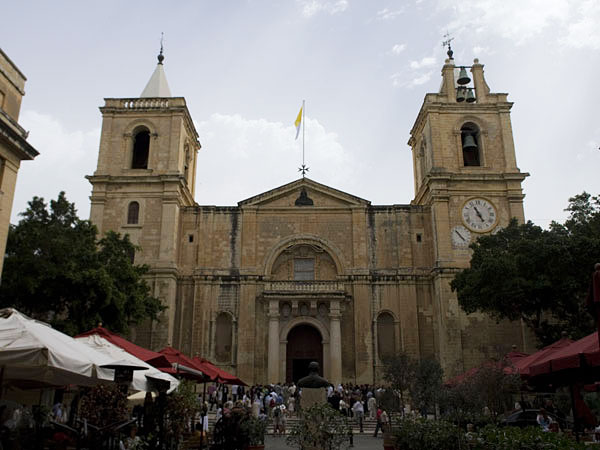 Photograph courtesy the Malta Tourism Authority.
Photograph courtesy the Malta Tourism Authority.The deceptively plain facade of the Co-Cathedral of St. John in Valletta.
-
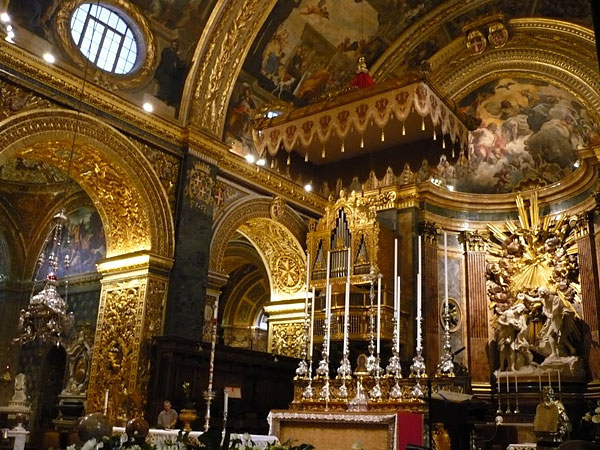 Photograph by John Swansburg.
Photograph by John Swansburg.The church’s decidedly not-plain altar.
-
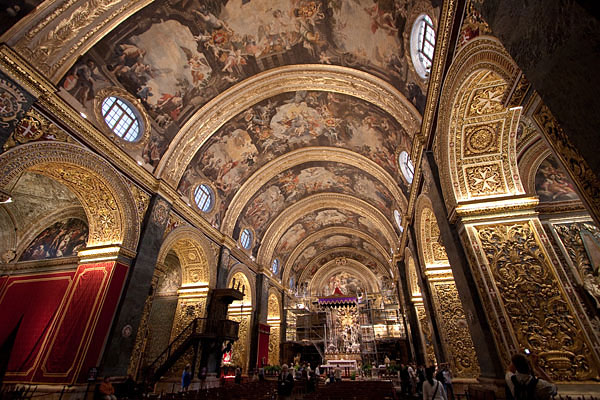 Photograph by Wouter van de Weerd for the Malta Tourism Authority.
Photograph by Wouter van de Weerd for the Malta Tourism Authority.The ceiling of the co-cathedral.
Featuring a cycle of paintings depicting the life of St. John, by the knight Mattia Preti.
-
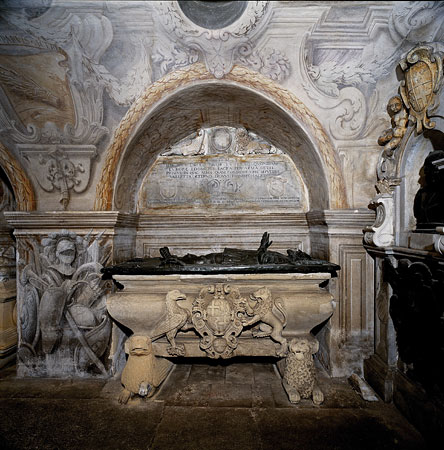 Photograph by Maurizio Urso. Courtesy CREDIT: Dane Munro.
Photograph by Maurizio Urso. Courtesy CREDIT: Dane Munro.The sepulchral monument of Grand Master Jean Parisot de la Vallette.
Vallette commanded the Knights of the Order of St. John during the Great Siege of 1565.
-
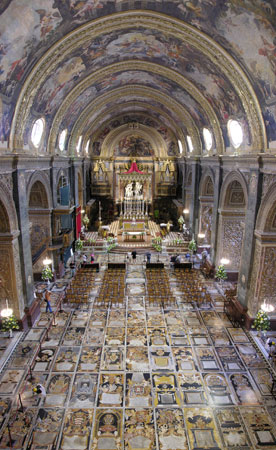 Photograph by Maurizio Urso. Courtesy CREDIT: Dane Munro.
Photograph by Maurizio Urso. Courtesy CREDIT: Dane Munro.The magnificent floor of the Co-Cathedral of St. John, made up of more than 350 polychrome intarsia marble tombstones.
-
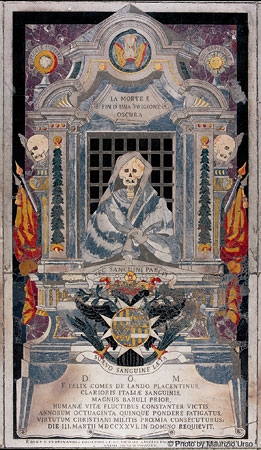 Photograph by Maurizio Urso. Courtesy CREDIT: Dane Munro.
Photograph by Maurizio Urso. Courtesy CREDIT: Dane Munro.The tombstone belonging to Felice de Lando.
“La Morte e fin d’ una prigoinoe oscura,” begins the epitaph. “Death is the end of a dark prison.” The translation is from Memento Mori, a stunning, exhaustive study of the floor by the historian Dane Munro. The book features lush photographs of each individual tombstone by photographer Maurizio Urso as well as Munro’s translations of the inscriptions and explications of the heraldic symbols. A must-have for any polychrome intarsia marble tombstone enthusiast. It now has pride of place on our coffee table.
-
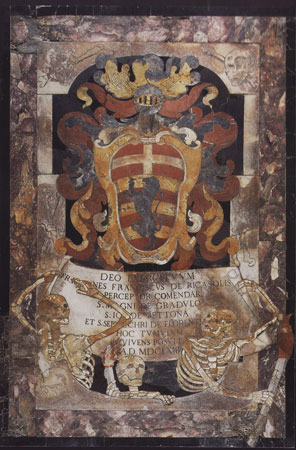 Photograph by Maurizio Urso. Courtesy CREDIT: Dane Munro.
Photograph by Maurizio Urso. Courtesy CREDIT: Dane Munro.The tombstone belonging to Francesco de Ricasoli.
-
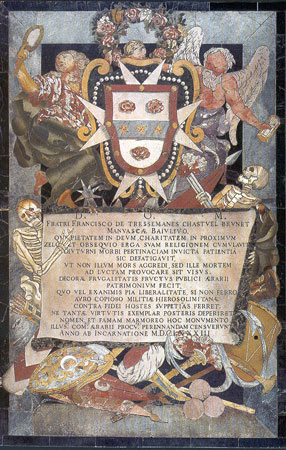 Photograph by Maurizio Urso. Courtesy CREDIT: Dane Munro.
Photograph by Maurizio Urso. Courtesy CREDIT: Dane Munro.The tombstone belonging to Francois de Tressemanes Chastuel Brunet.
The inscription reads: “He exhausted the incurability of a long lasting illness by his invincible endurance, so that it may seem that Death did not assail him, but that he challenged Death to a wrestling match.”
-
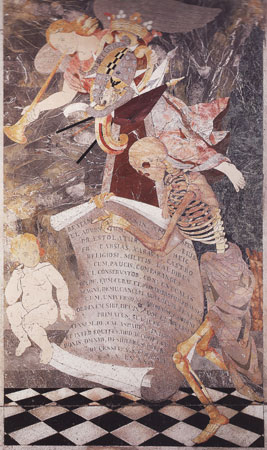 Photograph by Maurizio Urso. Courtesy CREDIT: Dane Munro.
Photograph by Maurizio Urso. Courtesy CREDIT: Dane Munro.The tombstone belonging to Garsia Xarava Castro.
-
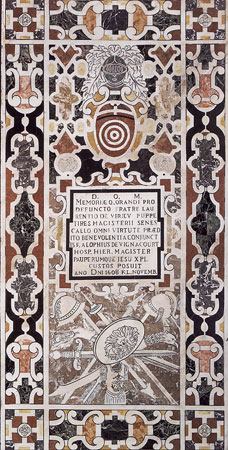 Photograph by Maurizio Urso. Courtesy CREDIT: Dane Munro.
Photograph by Maurizio Urso. Courtesy CREDIT: Dane Munro.The tombstone belonging to Laurens de Virieu Puppetieres.
The marker was placed by Grand Master Alof de Wignacourt in 1608.
-
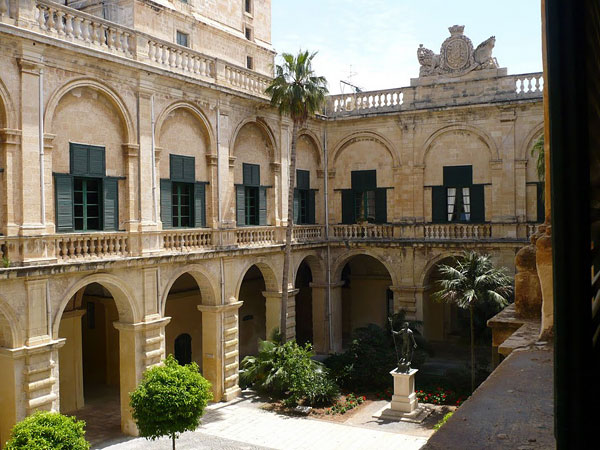 Photograph by John Swansburg.
Photograph by John Swansburg.A courtyard in the Magisterial Palace
Once home to the Knights of St. John and now home to its House of Representatives.
-
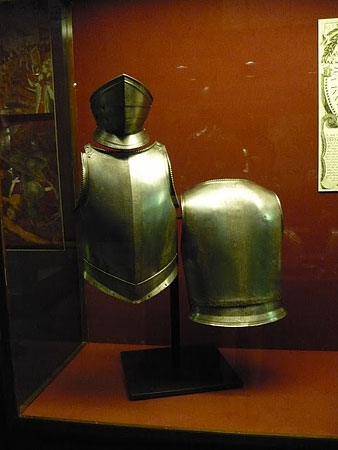 Photograph by Happy Menocal.
Photograph by Happy Menocal.Armor that belonged to Grand Master Jean Parisot de la Vallette.
-
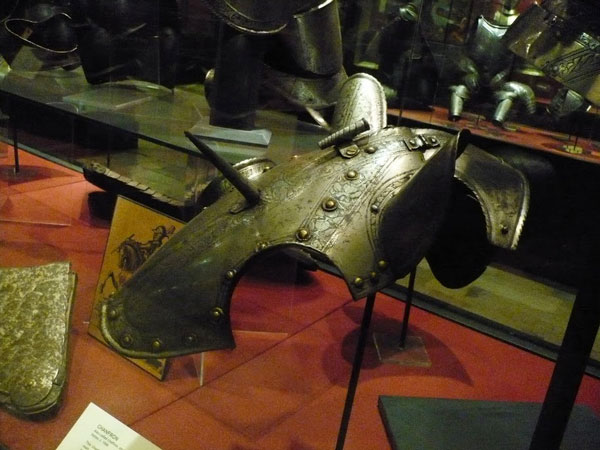 Photograph by Happy Menocal.
Photograph by Happy Menocal.A chanfron, armor worn by a knight’s horse.
-
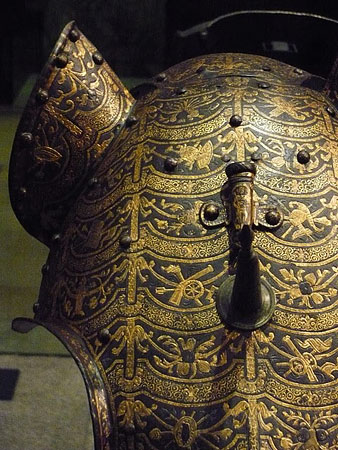 Photograph by John Swansburg.
Photograph by John Swansburg.Detail of the chanfron belonging to Alof de Wignacourt.
-
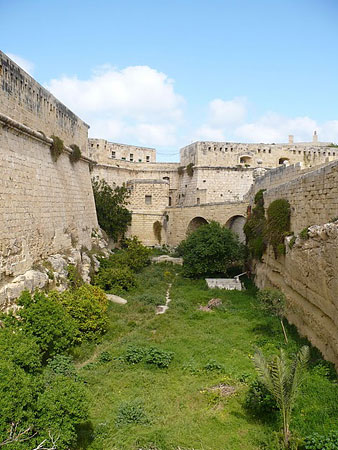 Photograph by Happy Menocal.
Photograph by Happy Menocal.Fort St. Elmo, which fell to the Turks during the Great Siege.
-
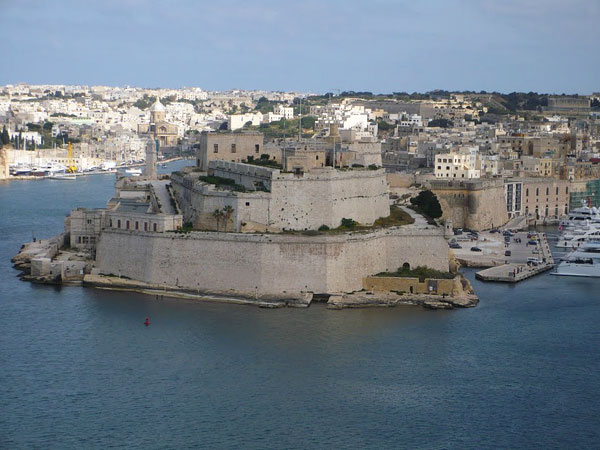 Photograph by John Swansburg.
Photograph by John Swansburg.Fort St. Angelo, in Vittoriosa, as seen from Valletta’s Upper Baraka Gardens.
Vallette commanded the knights from Vittoriosa during the Great Siege. Later, the fort contained a prison, from which Caravaggio would somehow escape after running afoul of the knights.
-
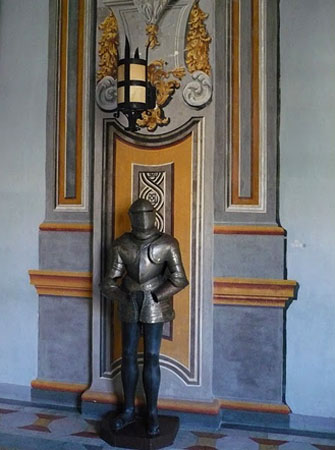 Photograph by John Swansburg.
Photograph by John Swansburg.A knight’s armor stands guard at the Palace State Rooms.
Return to the article, "Malta: 10 Days, 6,000 Years of History"